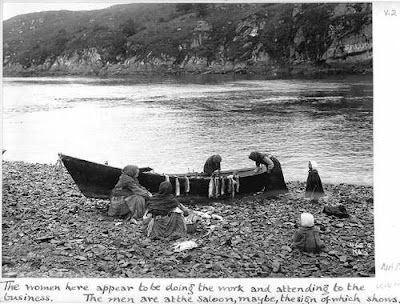
Although I do not have the specifics on the murder in 1911, what we do know is that two native Tlingit men were arrested and sent to San Quentin. Thomas Jacob Phillips born on this day, March 21, 1890 in Killisnoo Alaska and “Skookum Joe” Wright born 1867 in Dyea were accused of the murder. According to a report in 1994 done for the Department of Interior and the Department of Agriculture by the Institute of Economic Research, University of Alaska Anchorage, Gorsuch, Colt, Smythe and Garber authors, the two Native men were falsely accused and imprisoned.
On page 13 of this paper, according to Salvation Army records, Joe Wright was “converted” around the turn of the century while he was working as a packer on the pass. After the trial, he was sent to San Quentin and there, he was recruited by the Salvation Army. He was released in 1912, returned to Haines and started the Salvation Army Church there. He started the Salvation Army band then and he continued to proselytize in Haines and Klukwan until his death. Tom Phillips, the other man accused of murder and sent to San Quentin went on to serve in World War 1. He died in 1941 in Sitka and is buried in the Sitka National Cemetery there.
Seen above is the Salvation Army band of Klukwan, although I do not have a date, my guess is that Joe Wright is pictured in it.
rootsweb; paper online: http://www.iser.uaa.alaska.edu/Publications/5southeast_cmnts/AppendixA.pdf
Thornton, 2004 page 93
 The interesting thing about this photo of 2 native women and child packing stuff in 1897 at Dyea is the shape of the canoe which is very traditional, yet this one is not that decorative. It one of the few photos of Tlingit children and women at work.
The interesting thing about this photo of 2 native women and child packing stuff in 1897 at Dyea is the shape of the canoe which is very traditional, yet this one is not that decorative. It one of the few photos of Tlingit children and women at work.








